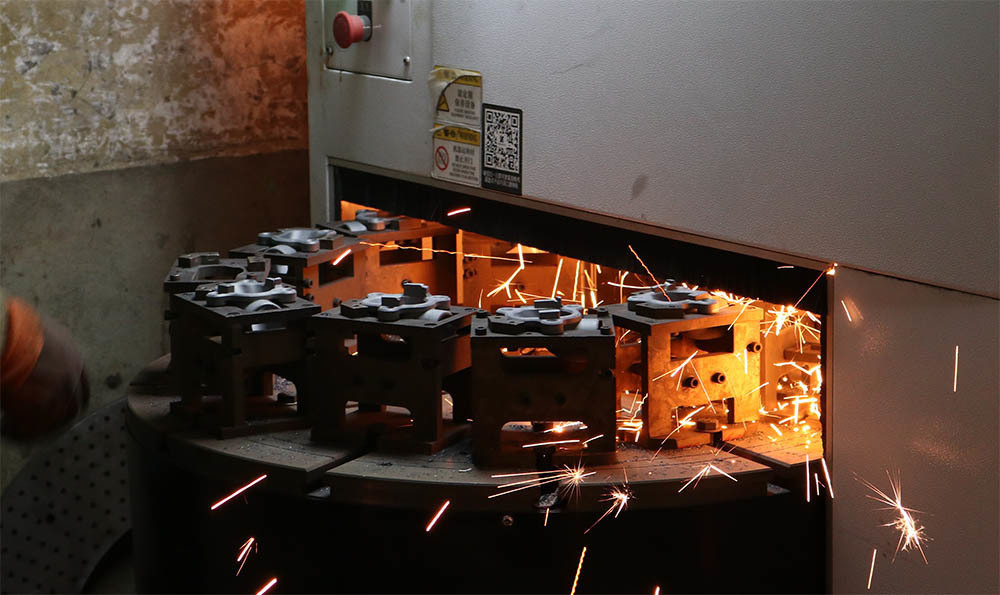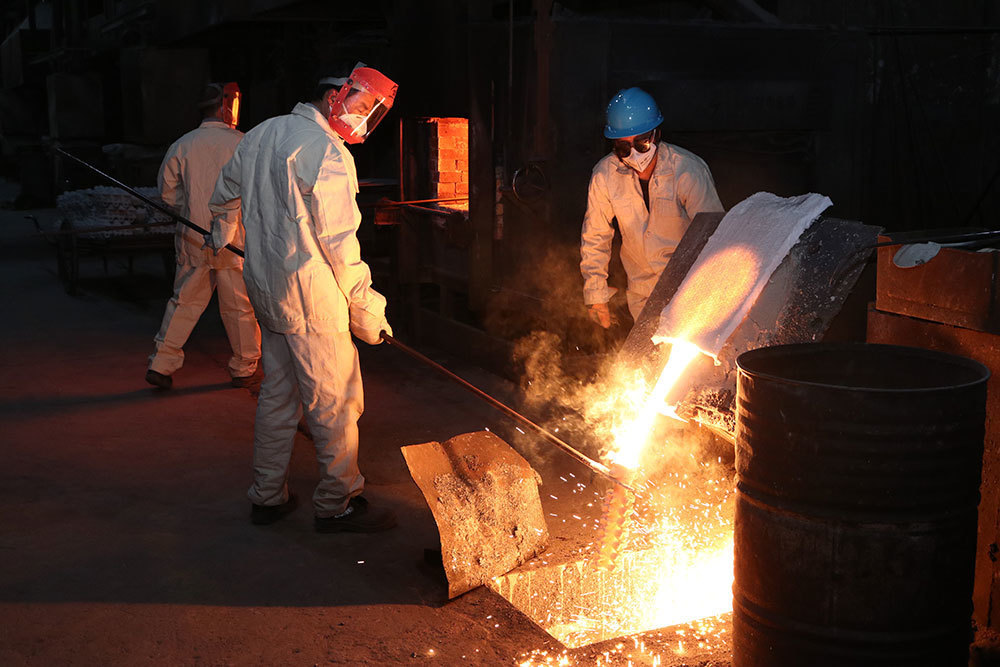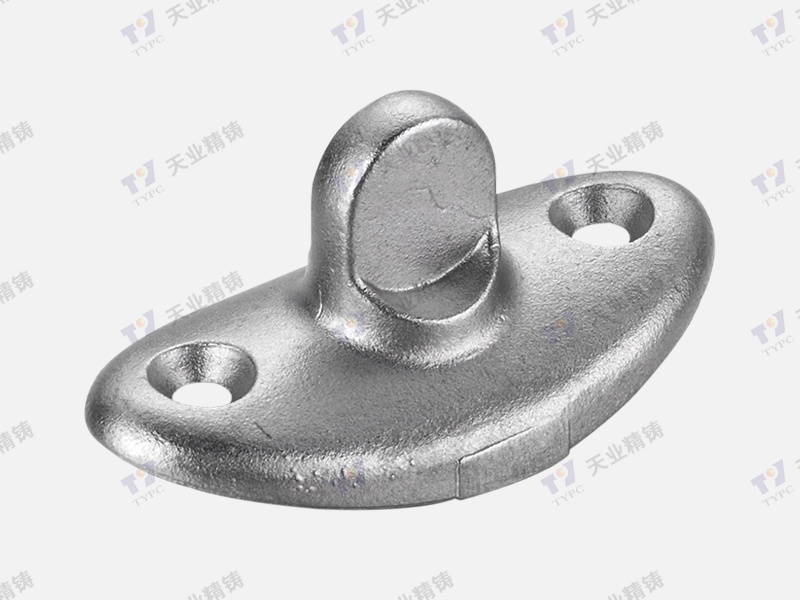2025-05-19
Driving Innovation in Manufacturing with Stainless Steel Casting: Revolutionizing Industry Standards
Driving Innovation in Manufacturing with Stainless Steel Casting
Table of Contents
- Introduction to Stainless Steel Casting
- Historical Evolution of Casting Processes
- Advantages of Stainless Steel Casting in Manufacturing
- Applications of Stainless Steel Casting Across Industries
- Key Innovations in Stainless Steel Casting Technology
- Sustainability in Stainless Steel Casting
- Future Trends in Stainless Steel Casting
- Conclusion
- FAQs
Introduction to Stainless Steel Casting
In today's competitive manufacturing landscape, **stainless steel casting** stands out as a pivotal technology that drives innovation and efficiency. This process involves pouring molten stainless steel into molds to create complex shapes and components, offering unparalleled durability and corrosion resistance. With an increasing demand for high-quality manufacturing, industries are turning to stainless steel casting to meet their needs.
Stainless steel casting is not just a method of production; it’s a comprehensive solution that addresses various challenges faced by manufacturers. By understanding the capabilities and benefits of this casting method, companies can significantly enhance their production standards and product offerings.
Historical Evolution of Casting Processes
The art of casting dates back thousands of years, with early civilizations utilizing simple techniques to create tools and ornaments. Over time, methods have evolved significantly, transitioning from primitive sand casting to advanced techniques like **investment casting** and **die casting**. The introduction of stainless steel in the 20th century marked a turning point in the casting industry.
Modern stainless steel casting leverages advanced technologies such as computer-aided design (CAD) and computer-aided manufacturing (CAM) to enhance precision and efficiency. Manufacturers can now produce intricate designs with exceptional accuracy, meeting the increasing demands of various sectors including aerospace, automotive, and medical devices.
Advantages of Stainless Steel Casting in Manufacturing
Stainless steel casting offers numerous advantages that make it an ideal choice for many manufacturing applications:
1. Durability and Corrosion Resistance
Stainless steel is renowned for its **superior strength** and **resistance to corrosion**. This makes it the preferred material for components exposed to harsh environments, including chemical processing and marine applications.
2. Design Flexibility
The casting process allows manufacturers to create complex shapes and designs that would be difficult or impossible to achieve with other manufacturing methods. This flexibility leads to innovative product designs and improved functionality.
3. Cost-Effectiveness
While the initial investment in stainless steel casting may be higher than traditional methods, the long-term benefits often outweigh the costs. Reduced maintenance, increased lifespan, and lower material waste contribute to overall cost savings.
4. Enhanced Performance
Components fabricated through stainless steel casting often exhibit improved performance characteristics, such as enhanced strength-to-weight ratios and better thermal conductivity, leading to more efficient products.
Applications of Stainless Steel Casting Across Industries
The versatility of stainless steel casting allows it to be utilized in various industries:
Aerospace
In the aerospace sector, the demand for lightweight and durable components is paramount. Stainless steel castings are used for critical parts, including turbine blades and structural components, where reliability is essential.
Automotive
The automotive industry relies on stainless steel castings for components like exhaust systems and engine parts. The material’s strength and resistance to high temperatures make it an ideal choice for ensuring vehicle longevity and performance.
Medical Devices
Stainless steel casting plays a crucial role in manufacturing medical devices that require high levels of hygiene and precision. Surgical instruments, implants, and other devices benefit from the material's non-corrosive properties and ability to be sterilized.
Oil and Gas
In the oil and gas industry, stainless steel castings are favored for their durability in harsh environments. Applications include valves, pumps, and fittings that must withstand extreme pressures and corrosive materials.
Key Innovations in Stainless Steel Casting Technology
The evolution of stainless steel casting is closely tied to technological advancements. Some key innovations include:
1. 3D Printing for Mold Creation
The integration of **3D printing** technology allows for rapid prototyping of molds, significantly reducing lead times and costs associated with traditional mold-making processes.
2. Advanced Simulation Software
Simulation software enables manufacturers to predict how molten metal will flow into molds, optimizing design and minimizing defects. This leads to higher quality castings and reduced waste.
3. Improved Alloy Formulations
Development of new stainless steel alloys has enhanced the performance characteristics of cast components, such as improved resistance to temperature fluctuations and enhanced strength.
Sustainability in Stainless Steel Casting
As sustainability becomes increasingly important across industries, stainless steel casting offers a viable solution. The material is inherently recyclable, reducing waste and energy consumption in manufacturing processes.
Many manufacturers are now focusing on **green casting technologies** that minimize environmental impact. Techniques such as **lost foam casting** and **shell molding** not only improve efficiency but also reduce the carbon footprint associated with traditional casting methods.
Future Trends in Stainless Steel Casting
The future of stainless steel casting is poised for significant advancements. Key trends include:
1. Automation and Smart Manufacturing
The adoption of automation and smart manufacturing technologies will streamline production processes, improve quality control, and reduce labor costs, allowing manufacturers to stay competitive.
2. Increased Use of Artificial Intelligence
AI technologies will play a crucial role in optimizing casting processes, predicting maintenance needs, and enhancing the overall efficiency of manufacturing operations.
3. Growth in Additive Manufacturing
As additive manufacturing techniques evolve, their integration with traditional casting processes may lead to a new era of hybrid manufacturing, offering benefits such as customization and rapid production.
Conclusion
Stainless steel casting is revolutionizing the manufacturing industry by providing innovative solutions that enhance durability, efficiency, and sustainability. As industries continue to evolve, the importance of adopting advanced casting technologies will only increase. By embracing the benefits of stainless steel casting, manufacturers can drive innovation, improve product performance, and meet the ever-growing demands of the market.
FAQs
1. What is stainless steel casting?
Stainless steel casting is a manufacturing process that involves pouring molten stainless steel into molds to create complex components with high durability and corrosion resistance.
2. What industries utilize stainless steel casting?
Industries such as aerospace, automotive, medical devices, and oil and gas heavily rely on stainless steel casting for producing durable and high-performance components.
3. What are the benefits of using stainless steel for casting?
The benefits include high durability, excellent corrosion resistance, design flexibility, cost-effectiveness, and enhanced performance characteristics.
4. How has technology impacted stainless steel casting?
Technological advancements such as 3D printing, advanced simulation software, and new alloy formulations have significantly improved the efficiency, quality, and capabilities of stainless steel casting.
5. Is stainless steel casting environmentally friendly?
Yes, stainless steel is recyclable, and many modern casting methods focus on minimizing waste and energy consumption, contributing to more sustainable manufacturing practices.









